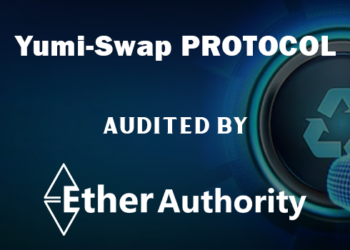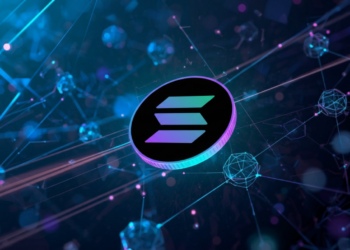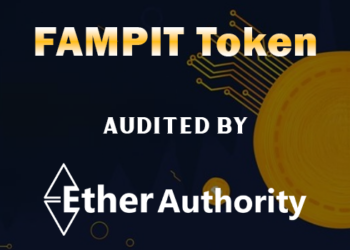Bitcoin, the pioneer of cryptocurrencies, has seen its popularity surge in recent years, becoming a household name in the world of digital finance. However, understanding the finer details of Bitcoin transactions and mining can often be confusing for newcomers. One such important yet often overlooked concept is the Bitcoin Fee-To-Reward Ratio.
This blog aims to demystify this concept by explaining its significance, how it’s calculated, and why it matters for both miners and users of the Bitcoin network. Whether you’re a seasoned Bitcoin user or just starting to explore the world of cryptocurrency, this guide will help you grasp the intricacies of Bitcoin’s fee-to-reward ratio.
What Is the Fee-To-Reward Ratio?
The Fee-To-Reward Ratio refers to the proportion of the total reward a Bitcoin miner receives that comes from transaction fees versus the block subsidy (also known as the block reward). In simpler terms, it helps determine how much of a miner’s earnings are generated from transaction fees and how much comes from newly minted Bitcoins.
To understand this, let’s break it down:
- Block Reward: This is the reward miners receive for successfully mining a new block on the Bitcoin blockchain. Initially, this reward was set at 50 BTC per block, but it halves roughly every four years in an event known as the Bitcoin halving. As of 2025, the block reward is 6.25 BTC, but it will continue to halve until it reaches zero.
- Transaction Fees: When users send Bitcoin, they include a fee with their transaction. This fee goes to the miner who includes that transaction in a new block. The transaction fee is a way to incentivize miners to prioritize transactions with higher fees.
The Fee-To-Reward Ratio is the ratio of the total transaction fees in a block to the total block reward, which includes both the block subsidy (newly minted coins) and the transaction fees. This ratio helps measure how reliant Bitcoin miners are on transaction fees as opposed to the block reward.
How to Calculate Bitcoin’s Fee-To-Reward Ratio
Calculating the Bitcoin Fee-To-Reward Ratio involves a straightforward formula:
Fee-To-Reward Ratio=Total Transaction Fees in a BlockBlock Reward\text{Fee-To-Reward Ratio} = \frac{\text{Total Transaction Fees in a Block}}{\text{Block Reward}}
For example, let’s assume a block contains:
- A block reward of 6.25 BTC
- A total of 0.25 BTC in transaction fees
The Fee-To-Reward Ratio would be:
Fee-To-Reward Ratio=0.25 BTC6.25 BTC=0.04\text{Fee-To-Reward Ratio} = \frac{0.25 \text{ BTC}}{6.25 \text{ BTC}} = 0.04
This means that 4% of the miner’s earnings in this block came from transaction fees, while 96% came from the block subsidy.
Why Does Bitcoin’s Fee-To-Reward Ratio Matter?
The Bitcoin Fee-To-Reward Ratio is important for several reasons:
1. Incentives for Miners
Miners are the backbone of the Bitcoin network. They validate transactions, maintain the blockchain, and ensure the security of the network. The incentives they receive, which are determined by the block reward and transaction fees, keep them motivated to continue mining.
As the block reward decreases over time due to halving events, miners will increasingly rely on transaction fees to sustain their operations. The Fee-To-Reward Ratio thus provides insight into how much of a miner’s earnings are coming from these fees as opposed to new Bitcoin being minted.
2. Network Security
The incentive structure for Bitcoin miners directly impacts the security of the network. If transaction fees account for a larger portion of miner rewards, miners may prioritize transactions with higher fees. This ensures that the network continues to process transactions efficiently, especially during periods of high demand.
On the other hand, if the block reward is still dominant, miners might not be as responsive to fluctuating transaction fees, which could lead to delays or bottlenecks in transaction processing.
3. User Costs
For Bitcoin users, understanding the Fee-To-Reward Ratio is crucial because it can influence the transaction fees they pay. During periods when the Fee-To-Reward Ratio is high, miners will prioritize transactions with higher fees, potentially increasing the cost for users. In contrast, a low Fee-To-Reward Ratio could signal that transaction fees are less of a concern, leading to lower fees for users.
4. Impact of Bitcoin Halving Events
Bitcoin halving events, which occur approximately every four years, significantly reduce the block reward. As the block reward decreases, the reliance on transaction fees becomes more pronounced. This change will become more critical as Bitcoin approaches its 21 million supply cap, after which no more new Bitcoin will be minted.
When that happens, the Bitcoin network will be entirely dependent on transaction fees to incentivize miners, making the Fee-To-Reward Ratio an even more significant metric for both miners and users.
What Does a High or Low Fee-To-Reward Ratio Indicate?
A high Fee-To-Reward Ratio suggests that a significant portion of the miner’s earnings is coming from transaction fees rather than the block reward. This typically occurs during periods of high network activity, such as when there is increased demand for Bitcoin transactions, driving up the average fee per transaction.
Conversely, a low Fee-To-Reward Ratio indicates that miners are primarily earning from the block reward, with transaction fees contributing a smaller portion of their earnings. This is more common during periods of lower demand for transactions, where the network can handle a higher number of transactions without significant fees.
The Impact of Bitcoin’s Fee-To-Reward Ratio Over Time
As Bitcoin progresses toward its supply cap of 21 million coins, the role of transaction fees in miner compensation will only become more important. With each halving, the block reward will continue to decrease, meaning that the network will eventually be fully dependent on transaction fees.
This shift will require significant adjustments for both miners and users. Miners will need to adapt their strategies to account for fluctuating transaction fees, while users may experience higher or lower transaction fees depending on network congestion.
For example, during a bull market when demand for Bitcoin transactions is high, the Fee-To-Reward Ratio may increase, leading to higher transaction fees. On the other hand, during bear markets or periods of low demand, the ratio may decrease, and transaction fees may drop as well.
Factors That Affect the Fee-To-Reward Ratio
Several factors can influence the Fee-To-Reward Ratio:
- Network Demand: High demand for Bitcoin transactions increases competition for block space, which leads to higher transaction fees and, consequently, a higher Fee-To-Reward Ratio.
- Block Size: The Bitcoin block size is capped at 1 MB, which limits the number of transactions that can be included in each block. When blocks are full, users need to offer higher fees to have their transactions prioritized, raising the Fee-To-Reward Ratio.
- Mining Difficulty: The mining difficulty adjusts approximately every two weeks to ensure that new blocks are mined at a steady rate of one every ten minutes. If the difficulty increases, miners may need to rely more on transaction fees to maintain profitability, especially if the block reward is insufficient.
- Bitcoin’s Price: The price of Bitcoin also plays a role in determining the Fee-To-Reward Ratio. When Bitcoin’s price is high, miners may be able to tolerate lower transaction fees since their block rewards are more valuable. However, during price drops, miners may demand higher fees to maintain profitability.
Conclusion
The Bitcoin Fee-To-Reward Ratio is a crucial metric for understanding the evolving economics of the Bitcoin network. As the block reward decreases over time due to halving events, miners will increasingly rely on transaction fees to sustain their operations. This shift will significantly impact the Bitcoin ecosystem, affecting everything from miner incentives to user transaction costs.
By keeping an eye on the Fee-To-Reward Ratio, both miners and users can better navigate the changing dynamics of Bitcoin transactions and ensure that the network remains secure, efficient, and scalable as it matures.
As Bitcoin continues to evolve, understanding metrics like the Fee-To-Reward Ratio will be essential for anyone looking to stay informed about the future of digital currencies. Whether you’re a miner optimizing your strategy or a user aiming to reduce transaction fees, this ratio will become more important as the network matures and moves closer to its 21 million coin limit.
Join Us : Twitter | Website | GitHub | Telegram | Facebook | YouTube























